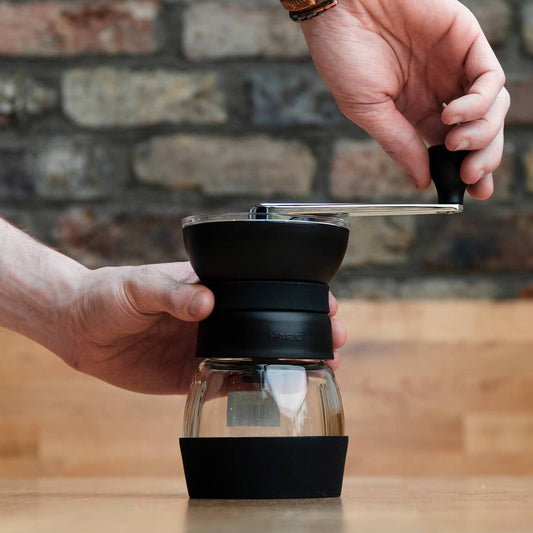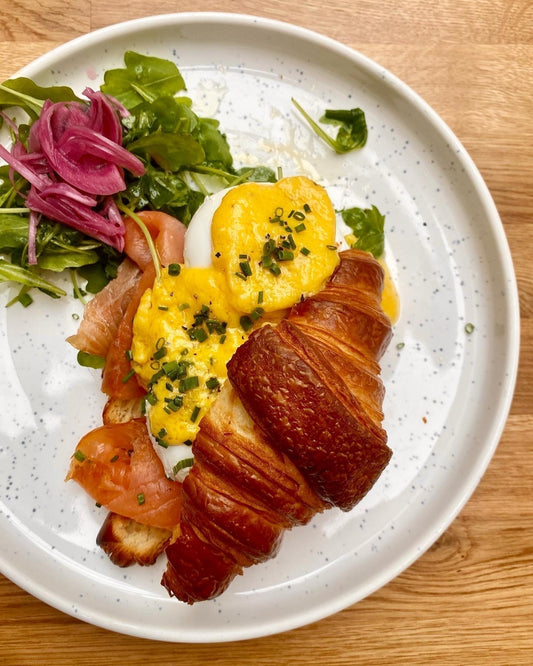Filtered coffee—also known as drip or pour-over coffee—is beloved for its clean taste, nuanced flavour, and ritualistic brewing process. Unlike espresso, which is bold and intense, filtered coffee lets the natural flavours of the beans shine through.
Whether you're preparing coffee for your family on a busy morning or enjoying a quiet moment before the day begins, mastering this method can elevate your daily cup into something truly special.
In this guide, we’ll walk you through the essentials: from choosing beans and equipment to brewing techniques and common mistakes to avoid.
Let’s brew brilliance ☕✨
What is filtered coffee?
Filtered coffee is made by pouring hot water over ground coffee, allowing it to pass through a filter (paper or metal) and drip into a carafe or mug. Using espresso as a reference again, which is prepared over pressure, filtered coffee relies on gravity and time—resulting in a smoother, more delicate cup.
Popular methods include:
- Pour-over (e.g. Hario V60, Chemex)
- Drip coffee makers
- AeroPress (technically immersion + pressure, but often used for filter-style brews)
Essential equipment:
To make great filtered coffee, you’ll need:
- Filters: Paper or reusable metal filters
- Coffee grinder: Burr grinders are best for consistency
- Gooseneck kettle: For precise pouring
- Digital scale: To measure coffee and water accurately
- Timer: For consistent brew time
- Fresh coffee beans
Optional but helpful:
- Thermometer: To monitor water temperature
- Stirring tool: For blooming and agitation
Want to keep your beans fresh longer? Try the Fellow Atmos Canister—it’s airtight and keeps your coffee (or snacks) tasting great up to 50% longer.
Choosing beans that speak to you
Your coffee’s flavour starts with the beans. For filtered coffee, light or medium roasts are ideal—they highlight fruity, floral, and nutty notes that get lost in darker roasts.
Tips for selecting beans
- Look for single-origin varieties to explore unique flavour profiles (e.g., Ethiopian for floral notes, Colombian for nutty ones). Blends can provide balance and consistency
- Choose beans roasted within the last 2–3 weeks
- Grind just before brewing for maximum freshness
Bean Type
- Arabica: Smooth, aromatic, and complex—ideal for filter brewing
- Robusta: Stronger, more bitter, and higher in caffeine—less common for filter coffee
Roast Level
- Light roast: Bright, acidic, and fruity—great for showcasing origin flavours
- Medium roast: Balanced and sweet—versatile for most palates
- Dark roast: Bold and smoky—less common for pour-over, but preferred by some
The golden ratio: coffee to water
A good starting point is 1:15 to 1:17 coffee-to-water ratio.
- For one cup (250ml): Use 15–17g of coffee
- Full pot (1L) = 60–65g of coffee
Use a digital scale for precision. Want a bolder brew? Increase the coffee slightly. Prefer something lighter? Add a bit more water.
Grind size matters
Grind size affects extraction. For filter coffee, aim for a medium grind, similar to granulated sugar.
- Too fine = over-extraction → bitter
- Too coarse = under-extraction → weak
Use a burr grinder for consistency. Adjust grind size based on brew time and taste.
Need a grinder? Wilfa Savour Coffee Grinder is a favourite among coffee lovers for its precision and durability.

Water quality & temperature
Water makes up 98% of your coffee—so it matters.
- Use filtered water: Avoid chlorine and impurities
- Ideal temperature: 90–96°C (195–205°F)
- Too hot = bitter; too cool = sour
Let boiled water sit for 30 seconds before pouring if you don’t have a thermometer.
Step-by-step brewing guide (Pour-over method)
Here’s how to brew a stellar cup using a V60 or similar dripper:
1. Prep your gear
Place your dripper over a mug or carafe. Insert a paper filter and rinse it with hot water to remove any papery taste and preheat your setup.
2. Measure & grind
Weigh your beans and grind to a medium consistency. Add the grounds to the filter and gently shake to level.
3. Bloom
Pour a small amount of hot water (twice the weight of your coffee) over the grounds. Let it sit for 30–45 seconds. This releases trapped gases and preps the coffee for extraction.
4. Pour in stages
Slowly pour the remaining water in circular motions, avoiding the edges. Total brew time should be 2.5–4 minutes.
5. Sip & savour
Swirl the carafe, pour into your favourite mug, and enjoy. You’ve just made something beautiful.
Pro tips for better filter coffee
- Rinse paper filters: Removes papery taste
- Preheat your gear: Keeps brew temperature stable
- Keep notes: Track ratios, grind size, and taste to refine your method
Common mistakes to avoid
- Using stale beans: Leads to flat, dull flavour
- Wrong grind size: Causes over- or under-extraction
- Skipping the bloom: Results in uneven flavour
- Inconsistent pouring: Affects extraction and taste
- Bad water: Tap water with chlorine can ruin your brew
Filter coffee variations
Once you’ve mastered the basics, try these twists:
- Iced filter coffee: Brew hot, then pour over ice
- Cold brew: Steep coarse grounds in cold water for 12–24 hours
- Spiced coffee: Add cinnamon, cardamom, or nutmeg to grounds
Final sip: why filter coffee is worth it
Making good filtered coffee is part science, part art—and all satisfaction. It’s a ritual that invites you to slow down, experiment, and connect with the flavours in your cup. With the right tools, beans, and techniques, you can brew a cup that rivals your favourite café.






